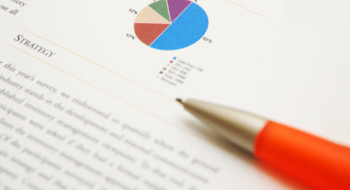

Exchange-traded funds (ETFs) are growing in popularity among institutional investors, but how can pension investors incorporate them into their portfolios?
An expert panel at the Canadian Investment Review’s annual ETF Summit discussed different approaches to ETFs and the range of options that institutional investors can explore. The panel included Kevin Duggan, vice-president, tactical asset allocation, with the Ontario Teachers’ Pension Plan; Zev Frishman, executive vice-president and chief investment officer with Open Access Ltd.; Clive Morgan, senior investment consultant with PBI Actuarial; and Mark Yamada, president and CEO of PUR Investing Inc.
Pension investors can use ETFs for both strategic and tactical purposes. And the “literally explosive” growth in ETFs has broadened the spectrum of what’s available, Frishman explained. “You can actually get fairly granular with ETFs nowadays,” he said, noting that investors can now make specific country allocations (e.g., U.K. ETF, Japan ETF, etc.) or buy low-volatility funds.
More advanced instruments—such as leveraged ETFs and ETFs that allow investors to make commodity bets—are also available. The range of choice is particularly broad in the U.S., Frishman added. “You can buy ETFs of almost everything that is not individual stocks and bonds.”
With great power comes great responsibility
Some of the advantages of ETFs, according to Frishman, can include lower costs than active management and not being reliant on an active manager’s skill. But he cautioned that the more complex ETF instruments require more research and education—and, often, higher costs. “You have to do your due diligence,” he stressed.
Morgan sees size as part of the issue. “I think you’ve got to break down the size of the plan sponsor,” he said. “If you’re large, like a Teachers’ or an OMERS, you have the resources in-house to understand, research and trade an ETF. If you go to a smaller pension plan—let’s say, $700 million or smaller—they don’t actually have the in-house expertise. And, to a very large extent, they say, ‘An ETF is an index fund. Why do I want to buy an index fund? Is it the cheapest way of doing it? And do I actually have the necessary governance set up to monitor it?’”
He added that he’s seen some plan sponsors who are unwilling to make a change from their active equity managers because they did so well in 2013.
Change is in the air
But despite a slowness to change, “there is momentum growing,” noted Yamada—particularly in the U.S. For example, he said, according to a recent Greenwich study, the use of ETFs for transition (tactical) purposes rose to more than 68% in 2013 from 38% in 2012. From a strategic standpoint, “fully 47% of endowments in the U.S. use ETFs—and, primarily, it’s for access to difficult markets,” he added. “ETFs are terrific at providing already pre-diversified packets of risk.”
One future growth area for ETFs is the DC pension market, said Yamada, who sees an opportunity to use them to lower costs for investors. He cited Schwab in the U.S., which recently launched a 401(k) program based on low-cost ETFs. Frishman also sees possible benefits for using ETFs in the DC universe.
Adding to the list of more sophisticated ETF products, the panel expects to see increased demand for real estate and infrastructure ETFs going forward. But, as with any investment strategy, investor knowledge is critical.
“It is still buyer beware,” reminded Yamada. “You really do have to look to the underlying—in all of these products—to understand what you’re buying and what the risks are.”
Related articles:
